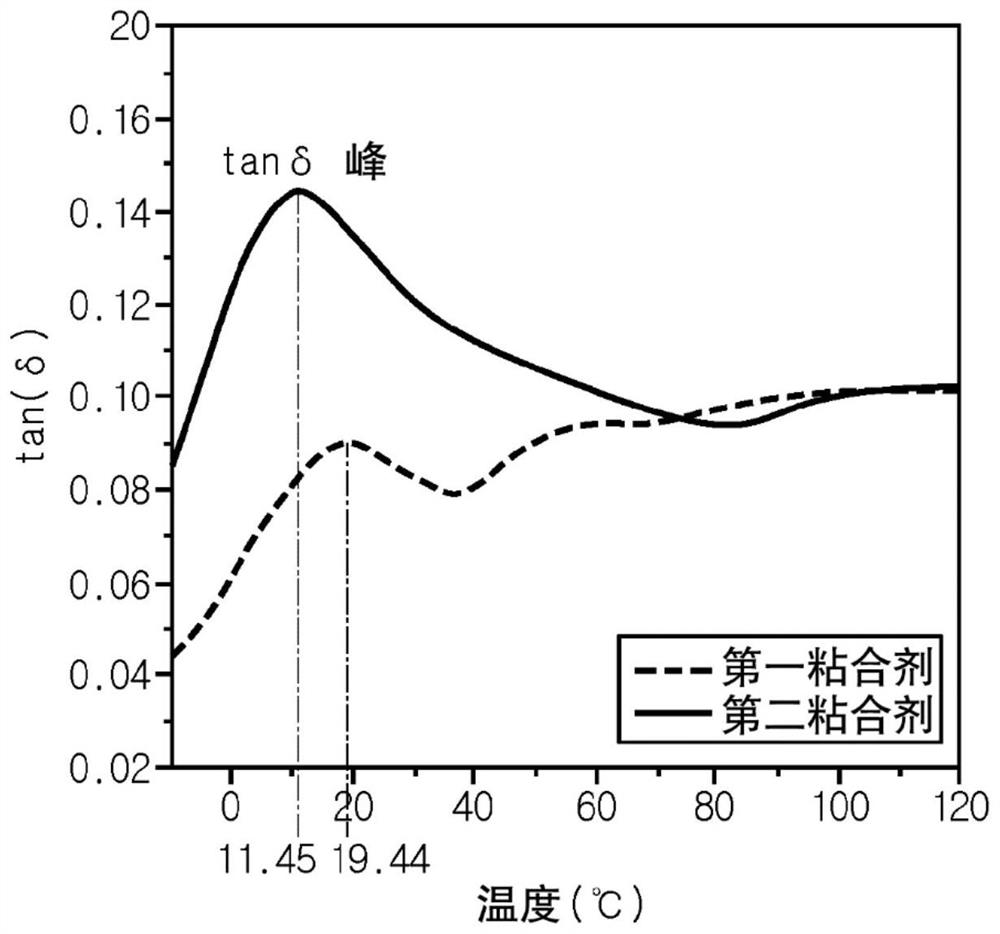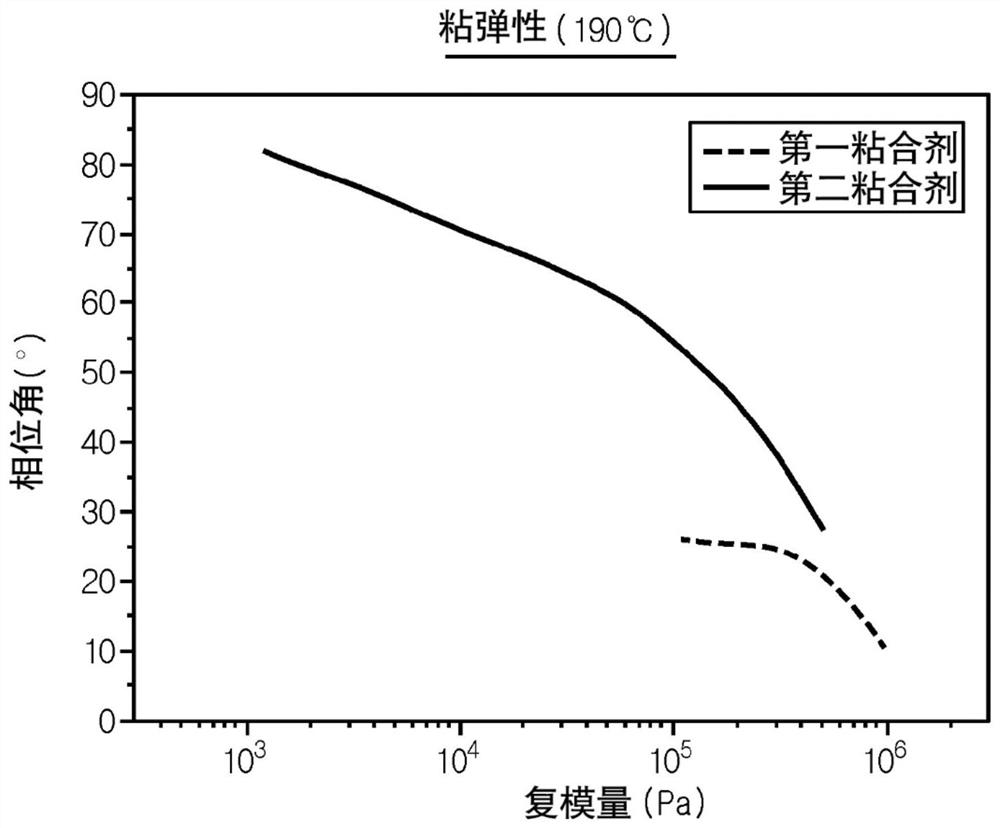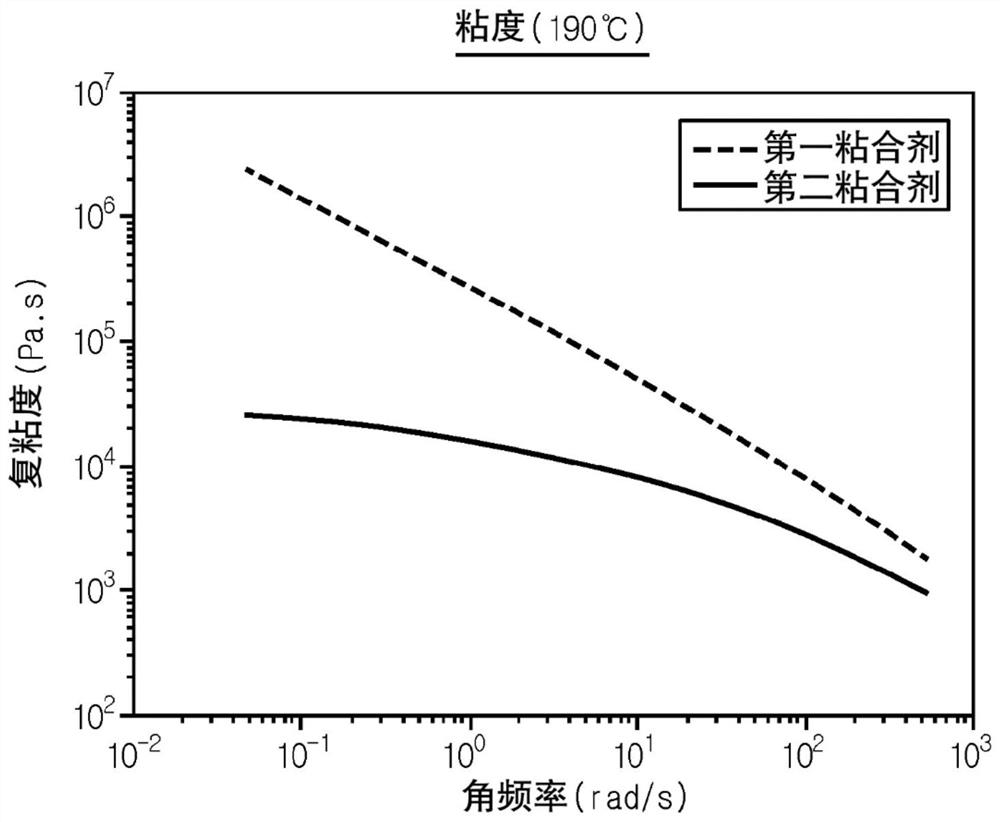Separator for lithium secondary battery having improved electrode adhesion strength and resistance characteristics, and lithium secondary battery including same
A lithium secondary battery, a technology of a separator applied to a separator for a lithium secondary battery having improved electrode adhesion strength and resistance characteristics, and a lithium secondary battery including the separator for a lithium secondary battery In the field of secondary batteries, it can solve the problems of unfavorable and unfavorable adhesion, and achieve the effect of increasing the surface area of adhesion, improving adhesion and excellent life.
- Summary
- Abstract
- Description
- Claims
- Application Information
AI Technical Summary
Problems solved by technology
Method used
Image
Examples
Embodiment 1
[0117] Preparation of compositions for forming porous coatings
[0118] As inorganic particles, the average particle diameter D was prepared 50 500nm Al 2 o 3 powder.
[0119] As the adhesive, two types of PVDF-based adhesives were prepared. Specifically, the first adhesive is a PVDF-TFE adhesive (commercially available as VT-475 from Daikin) with an elastic-dominated rheological behavior, wherein when the adhesive is pressed at 190° C. For an adhesive sample having a thickness of 0.4 mm, the adhesive sample has a temperature range of 15° C. to 27.6 mm as determined by Dynamic Mechanical Analysis (DMA) using a DMAQ800 available from TA Instruments. tanδ peak at °C. In addition, the second adhesive is a PVDF-HFP adhesive (available as Solef 21510 from Solvay) with a viscosity-dominated rheological behavior, wherein when the adhesive is pressed at 190° C. When formed into adhesive coupons having a thickness of 0.4 mm, the adhesive coupons have a temperature range between...
Embodiment 2
[0131] A composition for forming a porous coating was prepared in the same manner as in Example 1, except that Al was prepared at a weight ratio of 70:5:25 2 o 3powder, first binder, and second binder. The composition was controlled to have a solids content of 20 wt%.
[0132] Then, a porous polymer substrate is prepared, and the composition is applied to one surface of the substrate to obtain a separator for a lithium secondary battery, the separator is formed on one surface of the porous polymer substrate and includes a mixture of Porous coating with binder of inorganic particles. The total coating weight of the porous coating is 5.6g / m 2 .
Embodiment 3
[0134] A composition for forming a porous coating was prepared in the same manner as in Example 1, except that Al was prepared in a weight ratio of 70:2:24:4 2 o 3 powder, a first binder, a second binder, and a third binder, and the third binder is introduced together with the first binder and the second binder during preparation of the binder composition. The composition was controlled to have a solids content of 20 wt%. Here, PVDF-CTFE (Solef 32008 available from Solvay) was used as the third binder.
[0135] Meanwhile, when the third adhesive, that is, PVDF-CTFE (Solef 32008 available from Solvay) was formed into an adhesive sample with a thickness of 0.4 mm by pressing at 190° C., the adhesive sample Samples were analyzed by Dynamic Mechanical Analysis (DMA) using a DMA Q800 available from TA Instruments. The adhesive sample was shown to have a tan delta peak at -7.56°C.
[0136] Then, a porous polymer substrate is prepared, and the composition is applied to one surfac...
PUM
| Property | Measurement | Unit |
|---|---|---|
| thickness | aaaaa | aaaaa |
| thickness | aaaaa | aaaaa |
| thickness | aaaaa | aaaaa |
Abstract
Description
Claims
Application Information
 Login to View More
Login to View More - R&D
- Intellectual Property
- Life Sciences
- Materials
- Tech Scout
- Unparalleled Data Quality
- Higher Quality Content
- 60% Fewer Hallucinations
Browse by: Latest US Patents, China's latest patents, Technical Efficacy Thesaurus, Application Domain, Technology Topic, Popular Technical Reports.
© 2025 PatSnap. All rights reserved.Legal|Privacy policy|Modern Slavery Act Transparency Statement|Sitemap|About US| Contact US: help@patsnap.com



